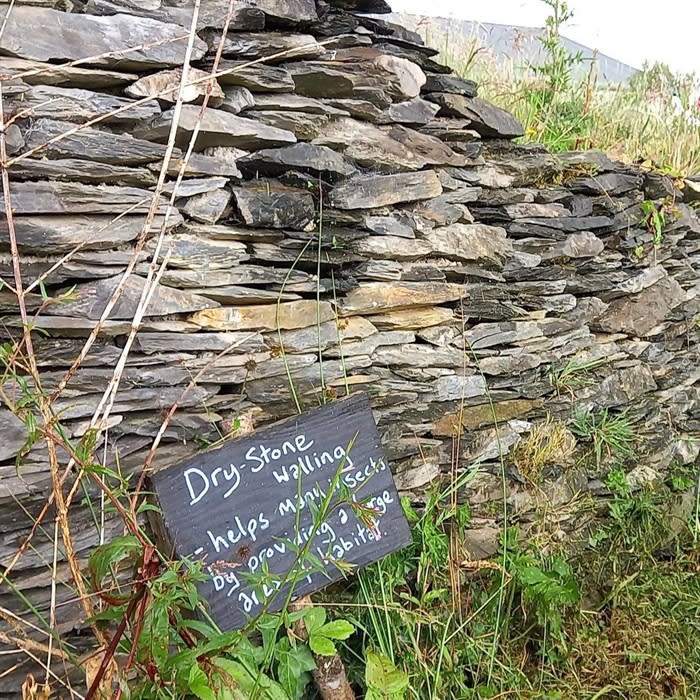An Craft of Dry Stone Walling: West Yorkshire's Overlooked Heritage
In the scenic landscapes of West Yorkshire, the practice of dry stone walling stands as a testament to skilled craftsmanship and traditional techniques. This ancient practice, which involves constructing robust walls bypassing the use of mortar, weaves together the deep history and natural beauty of the region. For hundreds of years, these stone walls have played a crucial role in defining the countryside, marking property lines, and serving as enclosures for livestock. Currently, dry stone walling not only maintains the cultural heritage of West Yorkshire but also still to inspire a deep appreciation for sustainable building techniques.
As the popularity of environmentally friendly construction methods increases, the craft of dry stone walling has surged in interest among homeowners, landscapers, and environmentalists similarly. It offers numerous benefits, from enhancing rural properties to fostering biodiversity in landscapes and landscapes. This article delves into the techniques, history, and ongoing relevance of dry stone walling in West Yorkshire, providing insights for those keen in discovering this hidden heritage or starting their own dry stone projects. If Stone Walling West Yorkshire are a seasoned builder or a novice beginner, the enduring charm of dry stone walls invites you to connect with the land and its storied past.
The History and Craft of Dry Stone Construction
Dry stone construction has historically been a cherished practice in West Yorkshire, that reflects the region's deep agricultural heritage. The method dates back to ancient times, rooted in the necessity of creating boundaries and shelters without the use of mortar. Using locally sourced rocks, artisans carefully fit each piece together, ensuring that walls could stand sturdy against the elements while also beautifying the natural beauty of the landscape.
Over the years, dry stone walls have served multiple purposes in the countryside of Yorkshire countryside. Not only do they mark property lines, but they also serve as habitats for wildlife, support biodiversity, and prevent soil erosion. The unique character of these walls lies in their organic construction, which allows for movement and flexibility, responding to environmental changes without sacrificing structural integrity.
Today, the art of dry stone walling continues to prosper, with expert wallers passing down traditional skills to younger artisans. Workshops and training sessions are available for those enthusiastic to learn this craft, emphasizing its significance in maintaining both cultural heritage and sustainable practices within the region. The artistry involved in building these walls merges functionality with aesthetics, making this craft a timeless feature of West Yorkshire's environment.
Advantages and Methods of Dry Stone Walling
Dry stone walling offers a variety of advantages that are particularly significant in the scenery of West Yorkshire. One of the key advantages is its environmental sustainability. As opposed to cemented walls, dry stone structures are built without mortars, enabling for water management and offering habitats for native wildlife. This technique of walling is both environmentally friendly but also beautifies the visual appeal of the natural scenery, merging with the landscape.
The methods involved in dry stone wall construction are grounded in age-old craftsmanship. Wallers meticulously select and arrange stones based on their form, size, and weight, creating a durable structure that can withstand the challenges of time and weather. The art lies in ensuring that the stones connect snugly without any mortar to hold them, using gravity and thoughtful engineering to maintain the wall's stability. Traditional methods highlight the significance of base layers and the intentional use of bigger stones at the base, which enhances to the wall's sturdiness and durability.
Learning these skills is open to anyone through classes and learning opportunities available in West Yorkshire. Beginners can begin with manageable projects, gaining insights into the details of fitting stones and understanding the art of wall design. This experiential experience not only cultivates a greater appreciation for this heritage craft but also connects people with their local landscape, promoting community ties and supporting the conservation of this special cultural tradition.
Finding Experts & Caring for Walls
In the case of concerning dry stone walling in West Yorkshire, finding talented craftsmen is vital. Search for professionals who have a history in traditional techniques and experience in local stone types. Recommendations from local agriculture groups or landscape professionals can be extremely helpful. Additionally, verifying for certifications from esteemed organizations can assist ensure that the craftsmen you choose uphold the expectations of quality and craftsmanship expected in the region.
Preserving a dry stone wall is critical to its longevity and structural integrity. Regular inspections can help detect any signs of erosion or displaced stones. Easy maintenance tasks include getting rid of vegetation that may threaten the wall and replenishing the drainage systems that prevent water accumulation at the base. By emphasizing ongoing care, you can prolong the life of your wall and keep its beauty for years to come.
It's also advantageous to engage in workshops and training related to dry stone walling. These educational events not only boost your understanding of wall construction and maintenance but also join you with the local community and craftsmen. Involving in such activities promotes a deeper appreciation for this traditional craft, guaranteeing its continued relevance and vitality in West Yorkshire's landscapes.
